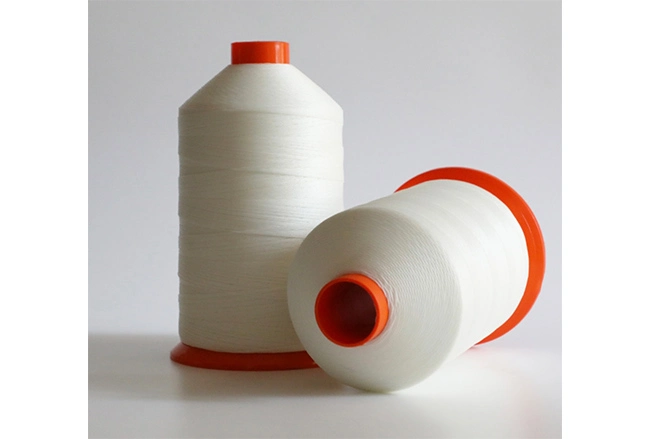
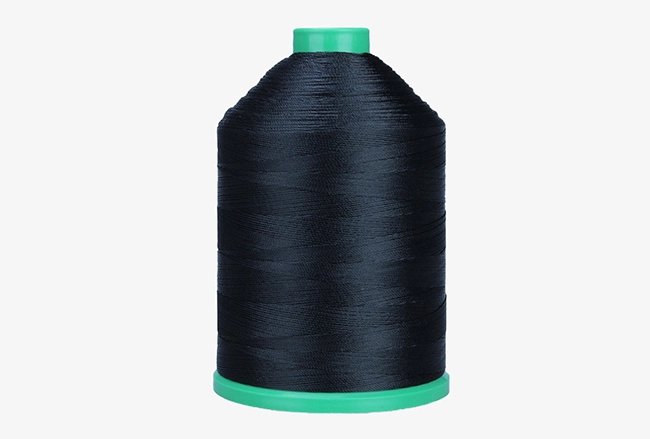
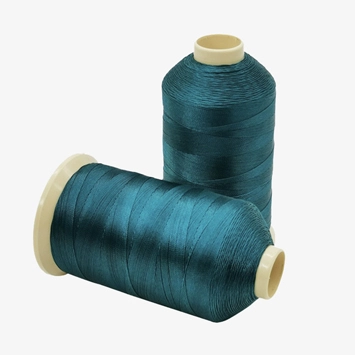
1. Sewing: Used for stitching fabrics together in garments, upholstery, and household textiles.
2. Leatherworking: Ideal for stitching leather goods such as bags, shoes, belts, and wallets.
3. Outdoor gear manufacturing: Utilized in the production of tents, backpacks, sails, and other outdoor equipment due to its durability and resistance to weather elements.
4. Upholstery: Employed for sewing furniture upholstery, car interiors, and marine upholstery.
5. Automotive: Used in automotive upholstery, seat covers, and interior trim.
6. Industrial applications: Applied in industries such as marine, aviation, and construction for stitching heavy-duty materials and components together.
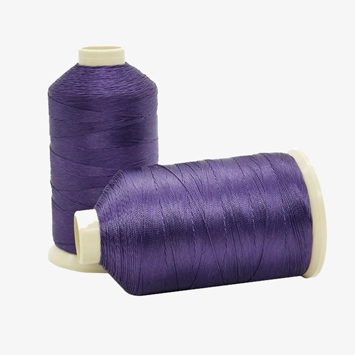
The main difference between bonded and non-bonded thread lies in their construction:
1. Bonded Thread: Bonded thread is treated with a special coating or adhesive that helps to strengthen and stabilize the fibers. This process creates a smoother surface and reduces fraying, making the thread more resistant to abrasion, UV rays, chemicals, and moisture. Bonded thread is commonly used in applications where durability and strength are essential, such as outdoor gear, leatherworking, and heavy-duty sewing.
2. Non-Bonded Thread: Non-bonded thread lacks the additional treatment found in bonded thread. It is made of individual strands of fiber twisted together without any coating or adhesive. While non-bonded thread is still strong and suitable for many sewing tasks, it may be more prone to fraying and wear over time compared to bonded thread. Non-bonded thread is often used in general sewing projects, quilting, and embroidery where extreme durability is not required.
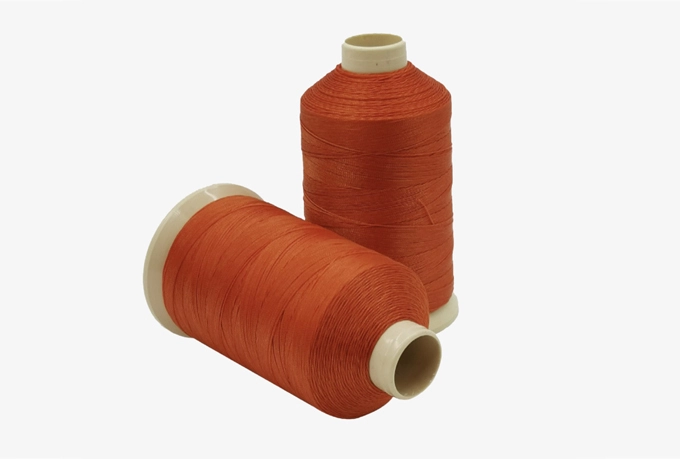
1. To find right needle for bonded thread, you're better to ensure the eye of the needle is 40% larger than the thickness of the thread. This will allow the thread to pass through the eye without trouble.
2. Polyester and nylon bonded threads including tex 45 bonded polyester thread and tex 45 bonded nylon thread usually have very similar tension characteristics as long as they are the same size. This means they are close enough in specs to generally not need tension adjustments when changing between them.
3. Please keep in mind that not all bonded heavy duty sewing thread is meant to be used with every type of fabric though bonding resulting in a more advanced technical sewing thread. Under no circumstance should you use the stronger bonded thread to sew silk since this heavy duty thread for sewing leather may excess grab the fabric and be more visible. So it's vital to match bonded thread to fabric to be sewn. Generally speaking, using polyester thread for synthetic blend materials, cotton thread for natural fabrics, and silk thread for silk materials.
4. For industrial sewing, tex 45 bonded polyester thread outperforms the non-bonded thread most in all ways. But the non-bonded thread requires much lower cost which means it is more affordable in large quantity for industrial sewing. However, when it comes to fireman's outfits, parachutes, and rock climbing gear where safety has to be at its utmost highest, bonded thread must be the first choice.
Yes, you can use bonded thread in a bobbin. However, it's important to consider the thickness and weight of the thread relative to the specifications of your sewing machine. Some sewing machines may not be designed to handle very thick or heavy threads in the bobbin, so using bonded thread in such cases could cause tension issues or even damage to the machine. Always check the manufacturer's recommendations for your sewing machine to ensure compatibility with the thread you plan to use in the bobbin.
Bonded thread can be made from various materials, but the most common ones are polyester and nylon. These synthetic fibers are known for their strength, durability, and resistance to abrasion, chemicals, and UV rays. The bonding process typically involves treating the thread with a special coating or adhesive to enhance its properties and performance. Additionally, some bonded sewing threads may incorporate other materials or additives depending on specific requirements for elasticity, colorfastness, or other characteristics desired for particular applications.
Choosing the size of bonded thread depends on several factors, including the type of project you're working on, the material you're sewing, and the capabilities of your sewing machine. Here are some considerations to help you choose the right size of bonded thread:
1. Thread Weight: Thread sizes are typically denoted by numbers, with larger numbers indicating thicker thread. For example, a tex 69 bonded thread is thinner than a tex 138 bonded thread. Thicker threads are suitable for heavier fabrics and stronger seams, while thinner threads are better for delicate fabrics and finer stitching.
2. Sewing Machine Compatibility: Ensure that the size of the bonded thread is compatible with your sewing machine. Check your sewing machine's manufacturer's recommendations for the range of thread sizes it can accommodate.
3. Project Requirements: Consider the requirements of your sewing project. If you're working on heavy-duty items like outdoor gear or upholstery, you may need a thicker bonded thread for added strength. For lighter-weight projects like clothing or quilting, a finer high strength bonded thread may be more appropriate.
4. Stitch Appearance: Choose a thread size that will complement the desired appearance of your stitches. Thicker threads will create more prominent, visible stitches, while thinner threads will produce finer, less noticeable stitches.
5. Color Matching: Ensure that the color of bonded thread complements or matches the fabric you're sewing. Bonded threads are available in a wide range of colors to suit different projects and preferences.
By considering these factors and experimenting with different thread sizes, you can select the right bonded thread for your specific sewing needs and achieve the desired results.

Rongudu Thread, a professional thread manufacturer in China, is always at your service.

Email Us

Call us

Address
No. 81 Chaoyang North Road, Hai'an City, Jiangsu Province, China.